 |
| Jerónimos Monastery (Hieronymites Monastery) in Belém |
There were a few places we wanted to see in Portugal when we
started planning our trip. But as we
researched on things to do and places to see, we were pleasantly surprised to
discover there was so much to do in Portugal. And as it turned out, we could
have used a few extra days. We had a packed itinerary, mostly doing day trips from
Lisbon to these fabulous sites.
The United Nations Educational, Scientific and Cultural
Organization (UNESCO) designates World Heritage sites for having "cultural
and natural heritage around the world considered to be of outstanding value to
humanity" (https://whc.unesco.org/en/about/)
Here are some of the UNESCO World Heritage Sites we visited and
how to get there:
 |
| Luiz I Bridge, and Monastery of Serra do Pilar from Ribeira Square |
Jerónimos Monastery (Hieronymites Monastery) —We got the Lisboa
card for the trip to Belém. The card covers transit and as well admission to Jerónimos
Monastery (and Belém Tower among other attractions). No need to line up to get
tickets. Just show/scan your Lisboa card at the entrance. Jerónimos Monastery
is a former monastery of the Order of Saint Jerome, commissioned by King
Manuel. The monks were tasked to pray for the voyagers and the king. It is one
of the most beautiful structures I have seen. Why have I never heard about this
before? Now, it is something I will never forget and will be difficult to top
in my list of most amazing structures. The interiors were so intricately carved,
and the columns even have individual designs (coil rope, sea motifs, etc). I
could not get enough pictures and yet those I have cannot seem to do it
justice. We were very lucky that there were not a lot of people at that time,
so it added to the serenity of the place. It was just utterly majestic, and I
can imagine it was a perfect place for contemplation. Right outside, is the Santa
Maria de Belém Church, another beautiful church where the tomb of Vasco de Gama
lies. This is worth seeing. There is no admission fee to this church.
To get here: tram, bus or tuktuk from Lisbon centre
 |
| Jerónimos Monastery |
 |
| Jerónimos Monastery |
 |
| tomb of Vasco de Gama @Santa Maria de Belém Church |
While not UNESCO sites, you may want to visit other places and attractions in Portugal.
As you are already in
the Belém area, you may want to check out the Monument to the Discoveries (Padrão dos
Descobrimentos). This is just a block away from the monastery. There is an
underpass to get to the other side.
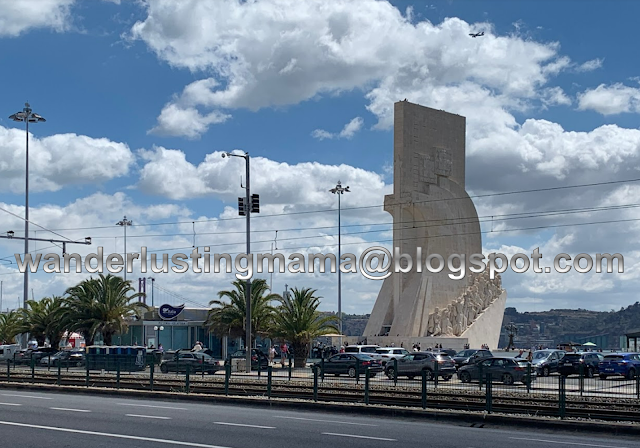 |
| Monument to the Discoveries |
Tower of Belém—from the 16th C, built using lioz limestone to commemorate
Vasco da Gama's expedition and stands to remind us of the great powerhouse that
Portugal was during the Age of Discoveries. Here you are supposed to scan your
Lisboa card by the ticket booth/kiosk in the park before going to the boardwalk
to the tower. The tower had only one narrow staircase and 93 steps to get through
4 floors. The line-up was mostly to wait for your turn to pass through the staircase.
It is not handicap accessible. The ground floor had many windows, cannons and
pits where the prisoners were thrown into. The exterior was quite ornate, and
the interiors boasted vaulted ceilings and a balcony with a killer view.
To get here: walk, tram, bus or tuktuk from Jeronimos Monastery.
You have to cross the overpass
 |
| Torre de Belém |
 |
| from the bastion of Torre de Belém |
 |
| from the balcony of Torre de Belém |
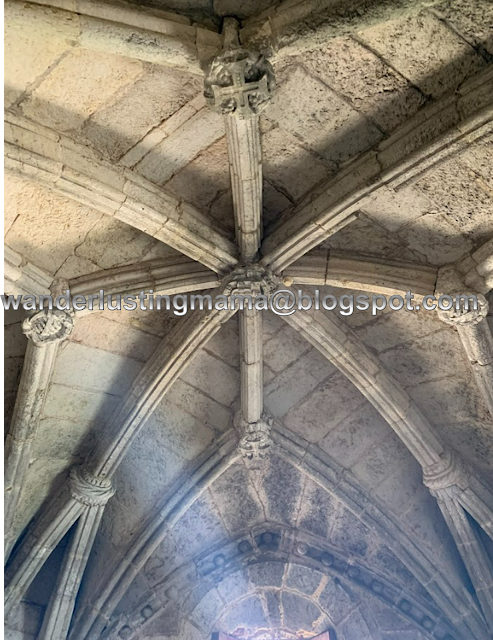 |
| ribbed ceilings of Torre de Belém |
 |
| cannons of Torre de Belém |
Other attractions you may want to check out that are not UNESCO sites include:
At Belém--the Museu
Nacional dos Coches (National Coach Museum). It has such a fantastic collection
of ornate ceremonial coaches and horse-drawn carriages. Such a delight to find
these were very well preserved. This is near the Belém tram/bus stop.
 |
| Museu Nacional dos Coches (National Coach Museum) |
Fátima is a little over an hour drive from Lisbon.It is a Catholic
pilgrimage site where you can see The Capelinha das Aparições (marking the spot
of the apparition of the Virgin Mary in 1917 to three shepherd children, 2 of whom
have already been canonized—St. Francisco and Sta. Jacinta. Sister Lucia’s
beatification and canonization is in progress). Other sacred sites include the
Basílica de Nossa Senhora do Rosário, and the modern church of Igreja da
Santíssima Trindade. While we no longer visited these, other sites in Fatima
include museums and the houses of St. Francisco, Sta. Jacinta and Sister Lucia.
If you stay to the evening, there is a vigil procession. Masses and rosaries are
said in several languages throughout the day.
You can take the bus or join a tour to get here.
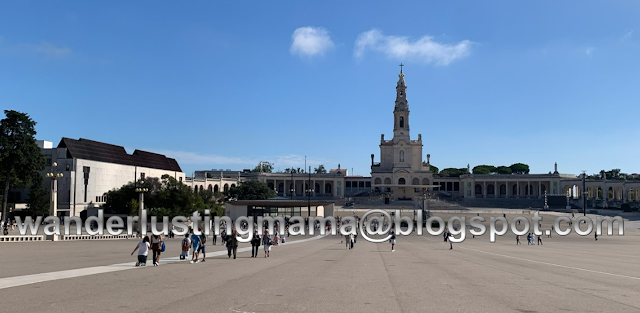 |
| Capelinha das Aparições (on the left) and Basílica de Nossa Senhora do Rosário (center), Fatima |
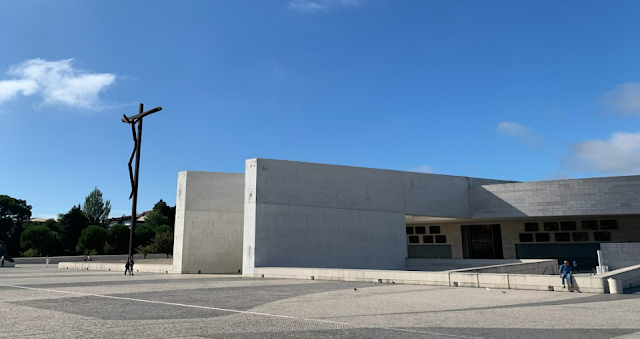 |
| Igreja da Santíssima Trindade |
 |
| tombs of Sto. Francisco and Sta. Jacinta |
And the last Heritage site we visited was--
Sintra—the Cultural Landscape of
Sintra is designated as the UNESCO World Heritage site. In the 19th
century, Ferdinand II turned the ruins of a monastery into a castle showcasing Gothic,
Egyptian, Moorish and Renaissance elements all rolled into Romantic architecture—this
is the Pena Palace. Nestled in the peaks of the mountains of Sintra, the
multicoloured palace is quite unlike anything we have seen. It seems to be
straight off of fairy tales. We took the tram to get to the Palace, which we
highly recommend. However, we no longer went inside the palace as we only had a
day to explore Sintra. There have been mixed reviews on the internet on whether
going inside is worth it. Surrounding
the palace is a park and gardens with local and exotic foliage. Several ponds dot
the park, connected by winding paths. You can pretty much explore just the park
all day. It features stables and greenhouses among other attractions. It does
require lots of walking, but the trails were just beautiful and peaceful. Plan
for cooler climates in the area. Note: Sintra’s attractions are discounted with
Lisboa card.
To get here: 40-minute train ride from Rossio (or Oriente station) or you can also take the bus. You can then take the local bus or tuktuk to get around.
 |
| Pena Palace, Sintra |
 |
| Pena Palace, Sintra |
 |
| Parks of Pena Palace |
About a 10minute walk from the Pena Palace is the Moorish Castle,
a medieval castle on the peaks of the Sintra mountains. It is said to be from
the 9th century, built during the Moorish occupation. The ruins are a
magnificent fortress with still-standing turrets that can be explored. It does
require physical exertion so be prepared for a lot of walking and climbing huge
(and sometimes narrow) stone steps. Again, it felt like it was just out of the
storybook. The views of the city from the Moorish castle were just magnificent.
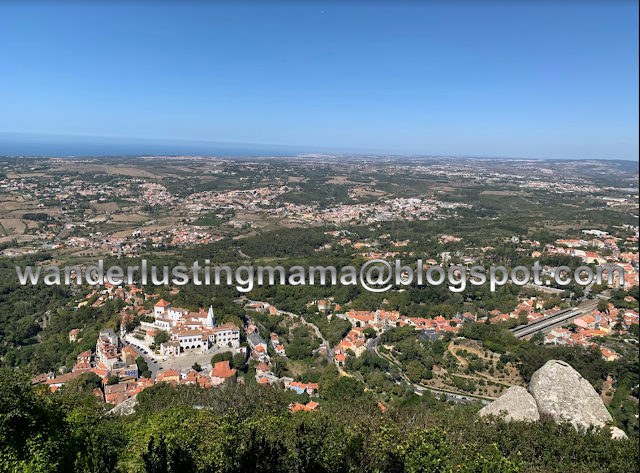 |
| view of Sintra |
 |
| Castle of the Moors (Castelo dos Mouros) |
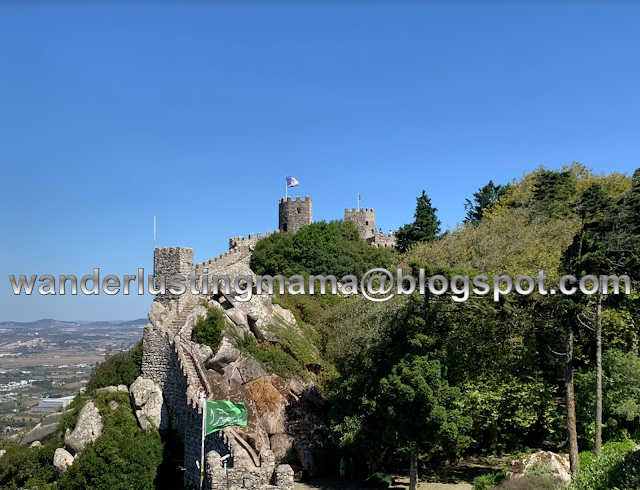 |
| Castle of the Moors (Castelo dos Mouros) |
 |
| Castle of the Moors (Castelo dos Mouros) |
You can walk a little over a kilometer, take the local bus or get
on a tuktuk down to the city centre where you can find the National Palace
(said to be a favourite destination of Portuguese monarchs) and Quinta de
Regaleira (a 16th century Renaissance-style manor). The shops and
restaurants are also in the city center. From here, you can easily walk back to
the train station. There are many other attractions in Sintra. I suggest you
take a couple of days for this.
 |
| National Palace of Sintra |
 |
| Quinta da Regaleira |
There are so many other sites to see, but so little time for us. There are, after all, a total of 17 World Heritage Sites in Portugal to date, with 19 more being evaluated.
























No comments:
Post a Comment